As researchers scramble to find better treatment options for ovarian cancer, new studies point to an unlikely aid: low doses of cannabis might offer relief from harsh cancer treatments and even help slow down the progression of the disease.
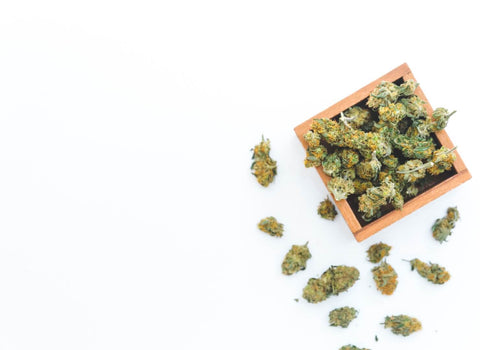
Small, regular doses of cannabis compounds like THC and CBD could inhibit tumor growth and even kill cancer cells.
What is the best way to consume small, precise doses of cannabis? We’re glad you asked. Our collection of Delta 9 gummies gives you high-quality microdosing in an easy, delicious package.
Read on to learn how cannabis compounds combat ovarian cancer.
But kicking cancer’s butt is not the only thing low doses of cannabis are good at. Here’s our list of benefits of microdosing weed.
What Is Ovarian Cancer?
Ovarian cancer is a type of cancer that originates in the female reproductive organs (ovaries), where eggs and hormones are produced. It occurs when abnormal cells in the ovaries or fallopian tubes grow and multiply uncontrollably.
Ovarian cancer is the leading cause of cancer-related deaths in women around the world. According to the National Cancer Institute, an estimated 236,511 women were diagnosed with ovarian cancer in the United States in 2020.
Ovarian cancer can be difficult to identify because symptoms generally don’t appear until the disease has progressed.
What Are the Symptoms of Ovarian Cancer?
Ovarian cancer can develop and spread throughout the abdomen without causing any noticeable symptoms. This is why this type of cancer is called the “silent killer”: it is often diagnosed at an advanced stage, when it has already metastasized and spread beyond the ovaries.
Symptoms of advanced ovarian cancer may include:
- Abdominal or pelvic pain
- Bloating and digestive discomfort
- Persistent indigestion
- Changes in your eating habits: feeling full early, loss of appetite
- Changes in your bowel habits: frequent urination, diarrhea, or constipation
- Vaginal discharge or bleeding outside of the typical menstrual cycle or after menopause
- Chronic fatigue
- Weight loss
What Causes Ovarian Cancer?
The exact causes of ovarian cancer are still unknown, but the following factors seem to increase one’s risk profile.
- Age.
- Obesity.
- Women who have never been pregnant have an increased risk of developing ovarian cancer.
- Early menstruation (before age 12).
- Late menopause (after age 55).
- Fertility treatments and the use of fertility drugs.
- Endometriosis.
- Family history of ovarian or breast cancer.
- Inherited gene mutations.
- History of breast, colon, or rectal cancer.
How is Ovarian Cancer Treated?
Treatment for ovarian cancer usually involves a combination of surgery, chemotherapy, and, in some cases, radiation therapy. The cancer stage, the location of the cancer, the patient's general health, and their desire for future fertility all have an impact on the specific cancer treatment.
Treatment options for ovarian cancer may involve the removal of the ovaries or other reproductive organs, which can significantly impact a woman's ability to conceive children in the future.
- Surgery is the primary treatment for ovarian cancer. It seeks to remove as much of the tumor as possible.
- Chemotherapy is often used after surgery to target any remaining cancer cells and lower the chance of recurrence.
- Radiation therapy is less commonly used to treat ovarian cancer, but it may be advised in some cases to target and eliminate ovarian cancer cells using high-energy X-rays.
Lately, more and more women are choosing to microdose cannabis as a way of complimenting ovarian cancer treatment, which can be aggressive and have serious adverse effects. Cannabis can help alleviate chemotherapy-related side effects such as nausea, vomiting, anxiety, fatigue, and loss of appetite.
But we’ll get into that later. First, let’s analyze the brilliant anti-cancer mechanisms of Delta 9 THC and cannabidiol (CBD).
We’ll talk a lot about Delta-9-tetrahydrocannabinol in this article. Make sure you understand what Delta 9 is and how it works.
How Does Cannabis Fight Cancer?
A 2022 review published in the British Journal of Cancer analyzed the extraordinary therapeutic potential of cannabis in treating cancer.
…cannabinoid compounds exert tumour growth inhibitory and antimetastatic effects, cannabinoid compounds may represent a useful additional therapeutic option to currently used cytostatic drugs. This view is also supported by studies indicating a synergistic effect of cannabinoids in combination with currently used chemotherapeutic agents and other therapeutic options. Furthermore, data increasingly suggest that cannabinoids may additionally function as antimetastatic and anti-angiogenic tumour therapy and support the immune system in its defence against tumours.
According to Hinz and Ramer’s review, cannabis compounds have:
- Anti-proliferative properties: cannabis inhibits the growth and division of cancer cells.
- Pro-apoptotic effects: cannabinoids such as Delta 9 and CBD cause programmed cell death (apoptosis) in cancer cells.
- Pro-autophagic effects: cannabis compounds promote autophagy, a process where cells degrade and recycle components, which can lead to cancer cell death.
- Anti-invasive effects: cannabis inhibits the spread and migration of cancer cells into surrounding tissues.
- Antimetastatic properties: THC and CBD help prevent the metastasis, or spread, of cancer from the primary tumor site to other areas of the body.
- Anti-angiogenic effects: cannabis blocks the formation of new blood vessels (angiogenesis) that supply oxygen and nutrients to the tumor.
According to Hart, et. al., low doses of THC inhibit the proliferation of lung cancer cell lines. These effects of cannabinoids are also found in other types of advanced cancer, such as glioblastoma.
Delta(9)-THC and cannabidiol acted synergistically to inhibit cell proliferation. The treatment of glioblastoma cells with both compounds led to significant modulations of the cell cycle and induction of reactive oxygen species and apoptosis as well as specific modulations of extracellular signal-regulated kinase and caspase activities. These specific changes were not observed with either compound individually, indicating that the signal transduction pathways affected by the combination treatment were unique.
THC and CBD seem to exert anti-cancer effects mainly by interacting with our bodies’ endocannabinoid system (ECS).
The Role of the Endocannabinoid System in Cancer
The endocannabinoid system plays a key role in regulating important bodily processes, such as:
- Mood
- Sleep
- Appetite
- Pain perception
- Reproductive health
- Immunological response
The ECS consists of endocannabinoids like anandamide and 2-AG, cannabinoid receptors CB1 and CB2, and enzymes that metabolize our endocannabinoids. We produce these vital parts of the ECS naturally in our bodies, but phytocannabinoids like THC and CBD—which come from plants like cannabis—can also interact with this system and influence it in the same way.
THC interacts with and binds to both CB1 and CB2 receptors.
- CB1 receptors are primarily expressed in the central nervous system, so when enough THC is present in the body, this interaction produces the well-known psychoactive effects. This is the so-called “high” the users feel when smoking or vaping cannabis.
- CB2 receptors are primarily found in immune cells. Their activation by THC can lower inflammatory processes, inhibit cancer cell proliferation, and induce apoptosis. THC also acts as an agonist at CB2 receptors to trigger anti-tumor effects.
Unlike THC, CBD has low affinity for CB1 and CB2 receptors. Instead of directly activating them, CBD acts as an antagonist, blocking the activity of endogenous cannabinoids at these receptors.
Delta 9 inhibits human breast cancer cell proliferation by interfering with the cell cycle (the mechanism that controls cell division). THC seems to act through CB2 receptors to inhibit cell cycle progression and cause apoptosis.
…Delta(9)-tetrahydrocannabinol (THC), through activation of CB(2) cannabinoid receptors, reduces human breast cancer cell proliferation by blocking the progression of the cell cycle and by inducing apoptosis… Of interest, the proliferation pattern of normal human mammary epithelial cells was much less affected by THC. (Caffarel, et. al.)
CBD also interacts with other targets like PPARγ and GPR55 to exert anti-inflammatory, analgesic, and anti-cancer effects. But the 2022 review also shows that CBD can induce cancer cell death in lung cancer cells independently of cannabinoid receptors and TRPV1. The mechanism involves upregulation of COX-2 and PPARγ, since blocking PPARγ reversed the CBD-induced tumor regression in mice.
A functional role of the aforementioned PPARγ-activating PGs could also be proven for the CBD-triggered cannabinoid receptor and TRPV1-independent apoptotic death of lung cancer cells. CBD also led to an upregulation of COX-2 and PPARγ in tumour tissue in A549-xenografted nude mice and to tumour regression, which was reversed by a PPARγ antagonist. (Hinz & Ramer)
The ECS and its interaction with cannabis compounds are involved in inhibiting cancer cell proliferation and metastasis. Cannabinoid receptors help induce apoptosis and autophagy in cancer cells. By manipulating the ECS, cannabis emerged as a viable strategy to inhibit tumor development and progression.
We think CBD and THC together are an even greater foe to cancer. That’s why we often combine the two cannabinoids in our delicious gummies. Order our Energy gummies with balanced ratios of both antitumor compounds and an exotic blood orange flavor. The low levels of THC provide therapeutic effects without overwhelming psychoactivity.
Can Cannabis Help With Ovarian Cancer?
Current clinical research on cannabis and ovarian cancer is still in its early stages, but initial findings are promising.
A 2023 study examined the potential of cannabis as a new treatment option for gynecological cancers, with a particular focus on ovarian cancer. In the study, cannabinoids showed anti-proliferative and pro-apoptotic effects on advanced cancer cells, and may provide an alternative to conventional therapies that often have toxic side effects.
Messalli, et. al. suggest that the endocannabinoid system may play a role in ovarian cancer progression, saying that “in invasive ovarian tumours, only higher levels of CB1 were found and this up‐regulation was related to the invasiveness of ovarian cancer.”
Targeting CB1 receptors could potentially help treat or characterize ovarian tumors. More malignant ovarian tumors had higher CB1 levels, indicating cannabinoids interacting with CB1 may fight invasive cancer.
A different study discusses, among other things, the role the endocannabinoid system has in cancer, including changes in cannabinoid receptor expression. Confirming what Messalli, et. al. have found, this study reveals that invasive tumors and terminal ovarian cancer have high levels of CB1 receptors.
Prostatic biopsies analyses show a higher expression of FAAH protein in adenocarcinomas in comparison with non-cancerous tissue. High MAGL expression was observed in ovarian tumors, in colorectal cancer tissues, and ductal breast tumors. Longer survival of pancreatic ductal adenocarcinoma patients correlated with elevated levels of FAAH and MAGL. In endometrial carcinoma, the downregulation of MAGL compared to healthy tissue was observed. (Pagano, et. al.)
FAAH and MAGL are enzymes that break down the endocannabinoids anandamide and 2-AG, respectively. FAAH degrades anandamide, so higher FAAH levels may lower anandamide signaling. MAGL breaks down 2-AG, so increased MAGL expression can reduce 2-AG tone.
In ovarian cancer, high MAGL expression may decrease anti-tumor 2-AG levels. Inhibiting MAGL could increase 2-AG and combat ovarian cancer.
The expression of enzymes that synthesize or break down endocannabinoids is dysregulated in many cancer types. This affects endocannabinoid tone and signaling. This suggests cannabinoids may help fight cancers like ovarian cancer, where CB receptors are overexpressed. Understanding these alterations could help target the endocannabinoid system for cancer treatment.
While the scientific evidence is promising, more research is needed to address gaps in our current understanding of cannabis and ovarian cancer.
Does Cannabis Help With Chemo-Related Side Effects?
Chemotherapy and other cancer treatments are frequently associated with many adverse effects that can have a substantial negative impact on the lives of patients with cancer. Many people turn to weed, as cannabis can help alleviate therapy-related side effects.
A 2021 study revealed that advanced cancer patients regularly use cannabis to treat both cancer- and therapy-specific symptoms, such as:
- Chronic pain
- Nausea and vomiting
- Fatigue
- Poor appetite
- Anxiety and depression
- Brain fog
- Sleep problems
- Digestive problems
Here’s how our low-dose edibles with THC, CBD, and other cannabis compounds can help women with ovarian cancer find relief.
Cannabis Reduces Nausea and Vomiting in Cancer Patients
Nausea and vomiting are common outcomes of cancer treatment, especially chemotherapy. The cytotoxic chemotherapy drugs designed to kill cancer cells also damage healthy, fast-dividing cells in the body, like those in the gut, triggering nausea. Different chemotherapy agents stimulate the chemoreceptor trigger zone in the brain that induces vomiting.
Cannabinoids provide a natural alternative to control these difficult side effects during cancer therapy because cannabis has antiemetic properties. A 2020 clinical trial found that “the addition of oral THC:CBD to standard antiemetics was associated with less nausea and vomiting…” and that “no serious adverse events were attributed to THC:CBD.”
THC and CBD engage with the endocannabinoid system to reduce nausea signaling in the brain. Clinical trials have demonstrated that inhaled cannabis medications like dronabinol and nabilone can effectively treat chemotherapy-induced nausea and vomiting when standard antiemetic medications fail.
Nabilone, a cannabinoid, recently received Food and Drug Administration approval for the treatment of nausea and vomiting in patients receiving cancer chemotherapy who fail to achieve adequate relief from conventional treatments. The cannabinoids exert antiemetic effects via agonism of cannabinoid receptors (CB1 and CB2). Clinical trials have demonstrated the benefits of nabilone in cancer chemotherapy patients. (Ware, et. al.)
Cannabinoids can prevent chemotherapy-induced emesis by acting at central CB1 receptors by preventing the proemetic effects of endogenous compounds such as dopamine and serotonin. In addition, by acting as an agonist to CB1, cannabinoids used as a treatment results in an antiemetic effect. (May & Glode)
Cannabis Edibles Alleviate Chemotherapy-Related Pain
Cancer patients undergoing chemotherapy often experience significant chronic pain related to their disease and treatment. Chemotherapy drugs can cause painful nerve damage or neuropathy. The cancer itself can also cause pain from tumors pressing on organs and nerves. Cannabis helps with pain management associated with chemotherapy and cancer pain.
A 2015 study on the use of cannabis and cannabinoids for treating chronic pain conditions found that cannabis might be an effective way to relieve neuropathic pain, arthritis pain, and cancer pain.
The results of a 2010 study showed that “the THC:CBD extract had a significant analgesic effect and helped manage cancer-related pain better than the THC extract or placebo.”
Cannabis has anti-inflammatory effects that can relieve pain at its source. Clinical research indicates cannabis is effective for chronic cancer pain refractory to opioids and other medications. Low-dose THC and CBD offer a safer alternative to treat chronic chemotherapy-related pain with mild to no side effects.
THC Stimulates Appetite and Helps Reduce Weight Loss
Cancer and chemotherapy treatments often lead to a loss of appetite and weight loss. THC has been found to stimulate appetite, which can help cancer patients maintain a healthy caloric intake and prevent muscle wasting.
The availability of specific cannabinoid receptor agonists and antagonists raises the possibility of improved therapies for disorders of eating and body weight: not only in the suppression of appetite to counter our susceptibility to the over-consumption of highly pleasurable and energy-dense foods; but also in the treatment of conditions that involve reduced appetite and weight loss. (Kirkham)
THC interacts with the CB1 receptors in the brain's hypothalamus. This stimulates the release of the hormone ghrelin, which triggers hunger. According to a 2022 study review, THC and CBD “have indications as appetite stimulants, antiemetics, cannabis addiction, sleep apnea and analgesics and are approved by the FDA for HIV/AIDS-induced loss of appetite and chemotherapy-induced nausea and vomiting.”
Cannabis Lowers Stress and Depression Related to Cancer Treatment
Chemotherapy can be harsh on patients and have a multitude of adverse effects. One of those is mental health deterioration: chronic stress, anxiety, and depression can seriously impact patients’ lives. But we have good news for people with cancer: cannabis is great at lowering stress, reducing anxiety, and battling depression.
A 2019 study indicated that 80% of participants treated with CBD for anxiety experienced improvement within the first month. According to Crippa, et. al., “CBD reduces anxiety in [generalized social anxiety disorder] and this is related to its effects on activity in limbic and paralimbic brain areas.”
Many cancer patients take small amounts of THC and CBD to alleviate depression. People undergoing cancer treatment tend to be low in “happy hormones” like dopamine and serotonin. These neurotransmitters are directly responsible for regulating our mood, keeping us happy and cheerful when their levels are optimal or making us sad and miserable when their levels are too low.
Our Relax Plus gummies are our favorite cannabis product to boost serotonin and promote relaxation. With 25 mg of premium CBD and a touch of Delta 9, these delicious gummies give you a moment of respite from the challenges of cancer treatment.
Product QUIZ
Need help deciding what product is best for you? Take our quiz, just three questions until your perfect match!
Why Are Edibles the Best Cannabis Products to Fight Cancer?
Microdosing with gummies and THC drinks offers a plethora of advantages over regular smoking or vaping. Here’s why we’re head over heels over our low-dose edibles, especially when it comes to fighting serious diseases like cancer:
- Edibles offer longer lasting effects. Edibles typically provide a longer duration of effects compared to smoking. When you eat cannabis, it goes through your digestive system, leading to a slower onset of effects that can last for up to eight hours for some people. This is so much better for maintaining a consistent level of relief throughout the day. We’re talking about sustained relief for conditions that require continuous symptom management, such as chronic pain, anxiety, or insomnia—all of which we’ve listed as nasty adverse effects of chemotherapy.
- Edibles provide a precise dosage. Edibles allow for more accurate dosing. Each edible product comes with a predetermined amount of THC, making it easier to control and monitor the dosage. This is particularly important when your goal is to achieve subtle effects without feeling overwhelmed.
- Low-dose edibles give you a gentler high. Speaking of not feeling overwhelmed, microdosing edibles can offer a milder and more gradual high compared to smoking larger amounts of cannabis. Delta 9 THC is the main psychoactive compound from the cannabis sativa plant, but that doesn’t mean you have to experience its intense effects every time you need its therapeutic benefits. The last thing cancer patients need are these overpowering psychoactive effects that typically come with smoking.
- Edibles guarantee smoke-free and healthier consumption. Edibles provide a smoke-free alternative to dangerous and cancerous smoking or vaping. Smoking can have potential negative impacts on lung health, increasing the risk of lung cancer and other respiratory issues. For those concerned about the respiratory effects of smoking weed, edibles offer a way to consume cannabis without inhaling harmful substances.
- Edibles are often more discreet than smoking. They don't produce a strong odor or visible smoke, making them suitable for situations where you'd like to munch on some weed gummies without drawing attention.
Our delicious gummies are the stars of our collections. However, not everyone enjoys the sweet variety of flavors packed into one bite-sized treat. Some people prefer the way THC drinks make them feel, and that’s okay because we have just the thing for them.
Add a drop or two of our liquid cannabis product and spice up your favorite non-alcoholic drink. With only 2.2 mg of THC and 2.9 mg of CBD, this delightful drinkable will be the life of every party.
Are THC and CBD Legal?
Microdosing Delta 9 THC is federally legal in the US under specific 2018 Farm Bill stipulations that say that Delta 9 THC edibles are legal if:
- The THC is derived from hemp, not marijuana
- The THC content does not exceed 0.3% by dry weight.
The Farm Bill removed hemp from the list of controlled substances, legally separating hemp from marijuana. This means that all of our THC edibles and CBD gummies are 100% legal at the federal level because they’re made from organic hemp.
However, each state chooses independently whether cannabis products containing Delta 9 THC will be legal in that state. For example, you can’t buy our Delta 9 edibles in Idaho and Kansas. Check out our detailed guide to state-by-state THC legality for additional information.
If you’re looking to buy the best THC edibles in the country, nama is the obvious choice. We care about what goes into our gummies, so we make sure we use only the highest quality ingredients and natural flavors.
What Are the Best Edibles for Ovarian Cancer?
Here’s a list of our top products for suppressing symptoms of nausea and vomiting, increasing appetite, improving sleep, reducing pain, and generally kicking ovarian cancer’s butt.
- Sleep Plus gummies are an obvious choice. They can help patients with cancer deal with insomnia and sleep apnea. 25 mg of CBD and 2 mg of THC work together to promote a healthy 8-hour-sleep every night. This unique blend of terpene-rich hemp extracts is backed by 3mg of melatonin, another sleep-promoting nutrient.
- An equal ratio of CBD to THC can do wonders for chronic pain management. Euphoria gummies are another obvious choice when it comes to alleviating pain and getting rid of the nasty side effects of chemotherapy.
- Our Bliss gummies also contain an equal CBD to THC ratio, albeit in lower concentrations. Bursting with honeydew melon flavor, these vegan edibles are designed to bliss out your evenings without breaking a sweat.
- Energy gummies contain not only 2.5 mg of THC and 5 mg of CBD but also L-theanine. L-theanine is a phyto-amino acid that promotes relaxation and sleep. In combination with the entourage effect produced by low doses of THC and CBD, L-theanine and our delightful Energy gummies can calm your nerves and reduce your anxiety without causing drowsiness.
- Meet our liquid Buzz drops. This drinkable THC and CBD form allows you to spice up your favorite mocktails and other non-alcoholic beverages to experience the ultimate bliss and cancer-kicking relief. Our Buzz drops contain ultra low doses of THC (only 2.2 milligrams per full dropper), so you won’t feel any of those intense feelings—just a blissful canna-experience.
Where to Buy Edibles
If you’re looking to buy the best cannabis edibles, remember that quality matters a lot. Some low-grade THC gummies may contain nasty stuff like pesticides, heavy metals, and other contaminants that can negate the health benefits of cannabis. You'll want to source your edibles from reputable sellers that provide lab testing results and use top shelf ingredients, like nama.
Be a savvy shopper and order at nama CBD. We’re transparent about the ingredients we put in our products—which are nothing short of top quality—and we use only organic, non-GMO, American sourced hemp with no artificial colorings or flavors.
Take a look at our guide to where you can purchase the best cannabis edibles that are 100% organic, legal, and delicious.
Microdosing Cannabis FAQ
Does CBD oil help with ovarian cancer?
CBD oil has gained attention for its potential therapeutic effects, but its role in ovarian cancer treatment is not yet fully understood. Ovarian cancer is a complex disease, and while some research suggests that CBD may have anticancer properties, more clinical studies are needed to draw definitive conclusions.
A 2011 study found that the “activation by Δ9-THC of the two cloned cannabinoid receptors, CB1 and CB2, can lead to the inhibition of cell proliferation, invasion and induction of apoptosis in human lung cancer cell lines resulting in the reduction of tumor burden.” The study went on to show that CBD modulates and enhances the ability of THC to inhibit cancer cell proliferation and survival.
CBD is believed to exert its effects through various mechanisms, including interaction with the endocannabinoid system and anti-inflammatory properties. Preclinical studies have shown that CBD may inhibit the growth of cancer cells and promote apoptosis, or programmed cell death, in some cancer types. However, specific clinical trials focusing on ovarian cancer are limited.
Does THC help with ovarian cancer?
THC has shown potential for managing cancer-related symptoms such as pain, nausea, and loss of appetite. It may have antitumor properties by inducing apoptosis and inhibiting cancer cell proliferation in clinical outcomes.
THC (tetrahydrocannabinol) is the main psychoactive compound found in the cannabis plant. While many people avoid using it because of its often intense psychoactive effects, low doses of THC produce no such effects and are thus a favorite choice among cannabis enthusiasts and cancer patients.
What kind of THC is used for cancer patients?
Pharmaceutical preparations containing THC, such as dronabinol or nabilone, are often prescribed in medical settings. These synthetic forms of THC are regulated and can provide standardized doses. In some regions, medical cannabis products with varying ratios of THC to CBD are also available. The choice of THC product depends on the specific symptoms being targeted and the legal regulations in the patient's location.
Is CBD good for cervical cancer?
Similar to ovarian cancer, there is limited clinical evidence regarding the use of CBD for cervical cancer specifically. CBD's potential anticancer properties have been explored in preclinical studies, but its efficacy and safety for cervical cancer treatment require further investigation.
Check out our article on the effects of cannabinoids on cervical cancer.
Do cannabinoids affect cancer cells?
Cannabinoids, including CBD and THC, have demonstrated potential in preclinical studies to affect cancer cells. They may influence cell growth, induce apoptosis, and inhibit angiogenesis (the formation of blood vessels that feed tumors). However, the effects can vary depending on the type of cancer and the specific cannabinoids used. Clinical research is ongoing to determine the full extent of cannabinoids' impact on cancer cells.
What increases the chances of ovarian cancer?
Several factors can increase the risk of ovarian cancer. These include a family history of ovarian or breast cancer, certain gene mutations (BRCA1 and BRCA2), increasing age, never having been pregnant, endometriosis, and the use of estrogen hormone replacement therapy. Early detection through regular screenings and awareness of these risk factors is crucial for improving outcomes.
What is microdosing THC good for?
Taking low doses of THC can be good for your health, as long as you keep the doses low (below the psychoactive threshold). Microdosing THC shows therapeutic potential for conditions like:
- Post-traumatic stress disorder (PTSD). Animal models and small clinical studies indicate that microdosing with THC and CBD may help reduce PTSD symptoms.
- Depression and anxiety. Microdosed THC may have anxiolytic effects that help people lower stress and anxiety and potent anti-depressant effects that aid people suffering from depression.
- Chronic pain. Regular low THC doses may provide analgesia by engaging cannabinoid receptors.
- Cancer treatment. A number of preclinical studies show the benefits of cannabinoids in small amounts for inhibiting tumor growth.
- Insomnia. Low doses of THC before bed may help reduce sleep difficulties and induce sedation without psychoactive effects the next day.
- Neurogenesis. Animal studies show low-dose THC may stimulate neural growth in the hippocampus. This could aid memory and learning and help you get rid of brain fog and cognitive impairment. (We’re talking about low doses. Higher doses of THC could have the opposite effects on your brain.)
- Dopamine and serotonin. These are two important neurotransmitters responsible for our feelings of happiness, pleasure, reward, and motivation, among other things. Small THC doses may boost dopamine levels to potentially improve mood and motivation. This neurotransmitter regulates pleasure and reward. Similarly, microdosing THC may increase serotonin, which could lift mood and reduce anxiety and depression.
Microdosing cannabis and THC shows considerable promise in the 21st century for treating various conditions without cognitive impairment. While it has strong therapeutic potential in helping to treat many of these—and so many more—medical conditions, microdosing cannabis should not be considered an alternative therapy for diseases like cancer, depression, etc.
More large-scale human studies are needed to further evaluate its effectiveness, proper dosing, and the potential benefits of microdosing THC.
What other substances can you microdose for cancer?
There are a few other substances besides cannabis that are being explored for microdosing in cancer treatment:
- Low doses of psilocybin, also known as magic mushrooms, may be combined with psychotherapy for its anti-depressant effects in cancer patients. Small studies found that psilocybin produced substantial and sustained decreases in cancer-related anxiety and depression. But more research is needed to prove the efficacy of psilocybin-assisted therapy for cancer patients.
- Small doses of LSD (15–20 micrograms) may improve mood and reduce distress for terminal cancer patients, based on initial studies. Low-dose LSD is believed to activate serotonin receptors and alter consciousness without causing hallucinations. However, more rigorous research is needed to show the effects and benefits of psychedelic-assisted therapy.
- Sub-anesthetic ketamine doses may help relieve cancer pain when used alongside opioids. Low-dose ketamine reduced pain and opiate requirements. But more research is required, as current data is limited.
- Ibogaine is another psychedelic compound from the iboga plant that has anti-addictive and antidepressant effects at low doses. Only preliminary research exists for ibogaine microdosing in cancer, but its ability to lift mood may benefit cancer patients.
Many of these psychedelics are being explored for microdosing in cancer treatment and palliative care. Early evidence shows therapeutic potential, but larger scale human trials are needed to confirm safety, dosing, and effectiveness as effective treatments for cancer.
Why do many cancer patients suffer from depression?
Cancer patients often suffer from depression for many reasons, all related to the distressing nature of the disease and its demanding treatments. The diagnosis of cancer itself can be the root of depressive disorders, as it represents a major life threat.
The toxic conventional cancer treatments also increase depression rates. Chemotherapy often produces severe side effects like nausea, hair loss, and neuropathy that contribute to lowered mood in patients over months of treatment. Even targeted therapies have adverse effects.
Real world evidence indicates that over 20% of cancer patients meet criteria for clinical depression. Undertreated pain further exacerbates depression. Many cancer patients develop treatment-resistant depression due to the persistent physical and emotional trauma of cancer. This depressive disorder is associated with noncompliance with therapies, reduced quality of life, and higher mortality.
Despite the high clinical utility of managing depression in cancer patients, depressive disorders remain underdiagnosed and inadequately treated. While therapies like cognitive behavioral therapy and antidepressants help, they fail to fully address the existential distress many patients face.
Novel treatments like cannabis and psychedelic-assisted therapy are being explored to provide relief from cancer-related depression.
How lethal is ovarian cancer?
According to Cancer Research UK, ovarian cancer ranks as the 7th most common cancer in women. Research on breast cancer cell lines has provided insights into the molecular subclasses and behavior of ovarian tumors.
The gold standard of care involves cytoreductive surgery and platinum-based chemotherapy, but relapse rates are high. Novel therapies like cannabinoids show potential, but human trials are limited. Bayesian analysis of available qualitiative data indicates cannabinoids may inhibit ovarian cancer progression and improve quality of life.
Large-scale controlled, gold standard trials are needed to compare cannabinoids against standard treatments for efficacy as first or second-line therapies for ovarian cancer.
Resources
Cancer of the Ovary - Cancer Stat Facts. (n.d.). SEER. https://seer.cancer.gov/statfacts/html/ovary.html
Hinz, B., & Ramer, R. (2022, March 11). Cannabinoids as anticancer drugs: current status of preclinical research - British Journal of Cancer. Nature. https://doi.org/10.1038/s41416-022-01727-4
Cannabidiol enhances the inhibitory effects of delta9-tetrahydrocannabinol on human glioblastoma cell proliferation and survival - PubMed. (2010, January 1). PubMed. https://doi.org/10.1158/1535-7163.MCT-09-0407
Delta9-tetrahydrocannabinol inhibits cell cycle progression in human breast cancer cells through Cdc2 regulation - PubMed. (2006, July 1). PubMed. https://doi.org/10.1158/0008-5472.CAN-05-4566
Hinz, B., & Ramer, R. (2022, March 11). Cannabinoids as anticancer drugs: current status of preclinical research - British Journal of Cancer. Nature. https://doi.org/10.1038/s41416-022-01727-4
Kaur, R., & Javid, F. A. (2023, August 1). Could cannabinoids provide a new hope for ovarian cancer patients? PubMed Central (PMC). https://doi.org/10.1002/prp2.1122
Fraguas‐Sánchez, A. I., Martín‐Sabroso, C., & Torres‐Suárez, A. I. (2018, May 22). Insights into the effects of the endocannabinoid system in cancer: a review. PubMed Central (PMC). https://doi.org/10.1111/bph.14331
Pagano, C., Navarra, G., Coppola, L., Bifulco, M., & Laezza, C. (2021, April 1). Molecular Mechanism of Cannabinoids in Cancer Progression. MDPI. https://doi.org/10.3390/ijms22073680
The Management of Cancer Symptoms and Treatment-Induced Side Effects With Cannabis or Cannabinoids - PubMed. (2021, November 28). PubMed. https://doi.org/10.1093/jncimonographs/lgab011
Oral THC:CBD cannabis extract for refractory chemotherapy-induced nausea and vomiting: a randomised, placebo-controlled, phase II crossover trial. (2020, August 13). ScienceDirect. https://doi.org/10.1016/j.annonc.2020.07.020
Ware1, M. A., Daeninck, P., & Maida, V. (2008, February 1). A review of nabilone in the treatment of chemotherapy-induced nausea and vomiting. PubMed Central (PMC). https://doi.org/10.2147/tcrm.s1132
May, M. B., & Glode, A. E. (2016, May 12). Dronabinol for chemotherapy-induced nausea and vomiting unresponsive to antiemetics. PubMed Central (PMC). https://doi.org/10.2147/CMAR.S81425
Medical Marijuana for Treatment of Chronic Pain and Other Medical and Psychiatric Problems: A Clinical Review - PubMed. (2015, June 1). PubMed. https://doi.org/10.1001/jama.2015.6199
Multicenter, Double-Blind, Randomized, Placebo-Controlled, Parallel-Group Study of the Efficacy, Safety, and Tolerability of THC:CBD Extract and THC Extract in Patients with Intractable Cancer-Related Pain. (2009, November 5). ScienceDirect. https://doi.org/10.1016/j.jpainsymman.2009.06.008
Cannabinoids and appetite: food craving and food pleasure - PubMed. (2009, April 1). PubMed. https://doi.org/10.1080/09540260902782810
Bilbao, A., & Spanagel, R. (2022, August 19). Medical cannabinoids: a pharmacology-based systematic review and meta-analysis for all relevant medical indications - BMC Medicine. BioMed Central. https://doi.org/10.1186/s12916-022-02459-1
Shannon, S., Lewis, N., Lee, H., & Hughes, S. (2019, January 7). Cannabidiol in Anxiety and Sleep: A Large Case Series. PubMed Central (PMC). https://doi.org/10.7812/TPP/18-041
Neural basis of anxiolytic effects of cannabidiol (CBD) in generalized social anxiety disorder: a preliminary report - PubMed. (2011, January 1). PubMed. https://doi.org/10.1177/0269881110379283
Marcu, J. P., Christian, R. T., Lau, D., Zielinski, A. J., Horowitz, M. P., Lee, J., Pakdel, A., Allison, J., Limbad, C., Moore, D. H., Yount, G. L., Desprez, P. Y., & McAllister, S. D. (2010, January 6). Cannabidiol enhances the inhibitory effects of Δ9-tetrahydrocannabinol on human glioblastoma cell proliferation and survival. PubMed Central (PMC). https://doi.org/10.1158/1535-7163.MCT-09-0407
Cancer Research UK. (n.d.). Cancer Research UK. https://www.cancerresearchuk.org/home
nama CBD FDA & Legal Disclaimer
Our products are not intended to diagnose, treat, cure, or prevent any disease. They are not a replacement for prescription medications and have not been evaluated by the U.S. Food and Drug Administration (FDA).
The information provided on this website does not, and is not intended to, constitute legal advice or any statement of the status of any laws. Any information, content, and materials available on this site are for general informational purposes only and are not intended to be relied upon for any purpose.
Readers of this website should contact their attorney to obtain advice with respect to any particular legal matter, including decisions on what products are, or are not, legal to sell, possess, or consume. No reader, user, or browser of this site should act or refrain from acting on the basis of the information on this site without first seeking legal advice from their own counsel in the relevant jurisdiction.

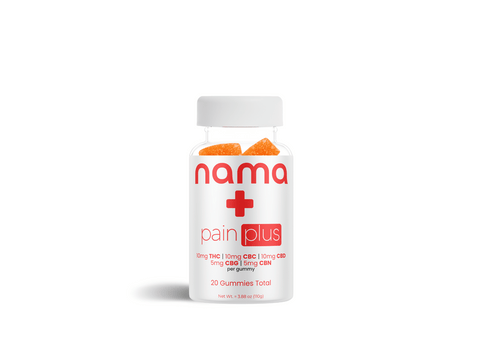
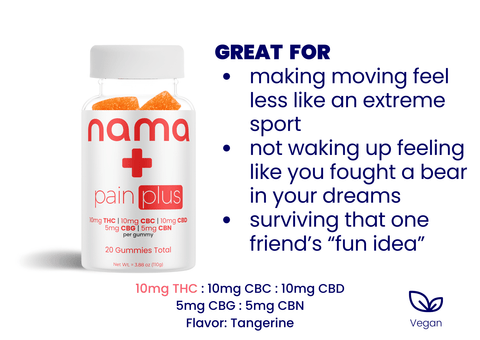
![Euphoria Black Raspberry [10ct]](http://www.namacbd.com/cdn/shop/files/nama_black_raspberry_pouch.png?v=1715285306&width=480)
![Euphoria Black Raspberry [10ct]](http://www.namacbd.com/cdn/shop/files/nama_black_raspberry_nutrition_label.png?v=1715285313&width=480)
![Euphoria Kiwi Raspberry [10ct]](http://www.namacbd.com/cdn/shop/files/nama_kiwi_raspberry_pouch.png?v=1715285056&width=480)
![Euphoria Kiwi Raspberry [10ct]](http://www.namacbd.com/cdn/shop/files/nama_euphoria_kiwiraspberry_nutrition_facts.jpg?v=1715873960&width=480)
![Euphoria Triple Berry [10ct]](http://www.namacbd.com/cdn/shop/files/nama_euphoria_triple_berry_pouch.png?v=1715286095&width=480)
![Euphoria Triple Berry [10ct]](http://www.namacbd.com/cdn/shop/files/nama_euphoria_tripleberry_nutrition_facts.jpg?v=1715873950&width=480)
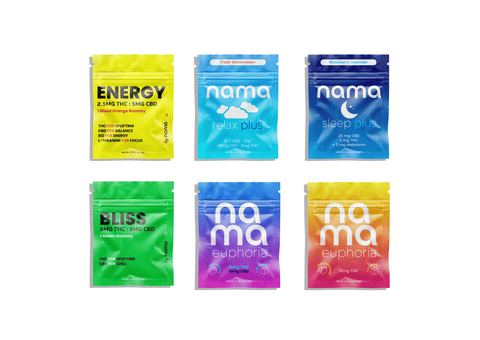
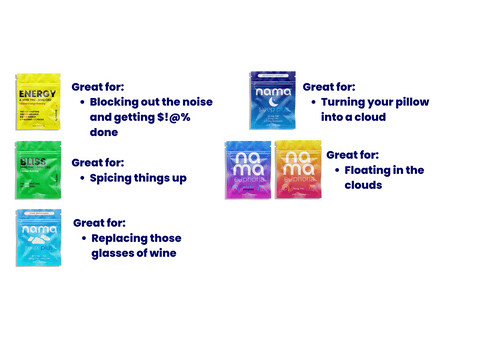
![Buzz Drops™ [THC Drink Drops]](http://www.namacbd.com/cdn/shop/files/nama_thc_buzz_drops.png?v=1711412866&width=480)
![Buzz Drops™ [THC Drink Drops]](http://www.namacbd.com/cdn/shop/files/buzz-drop-wine-comparison.png?v=1736882023&width=480)
![Buzz Packs™ [THC and CBD Powder Drink Mix]](http://www.namacbd.com/cdn/shop/files/nama_buzz_packs_thc_drink_pack_white_background.png?v=1741884660&width=480)
![Buzz Packs™ [THC and CBD Powder Drink Mix]](http://www.namacbd.com/cdn/shop/files/Buzz_Packs_Label.png?v=1741884660&width=480)
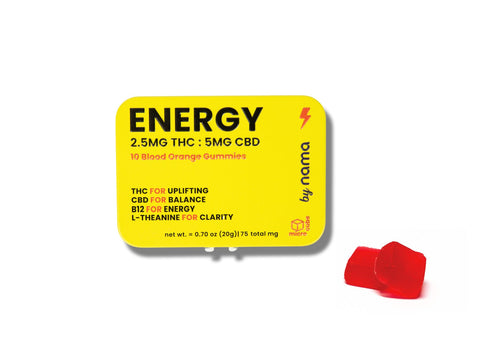
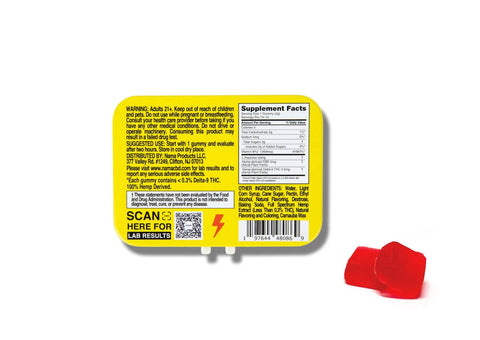
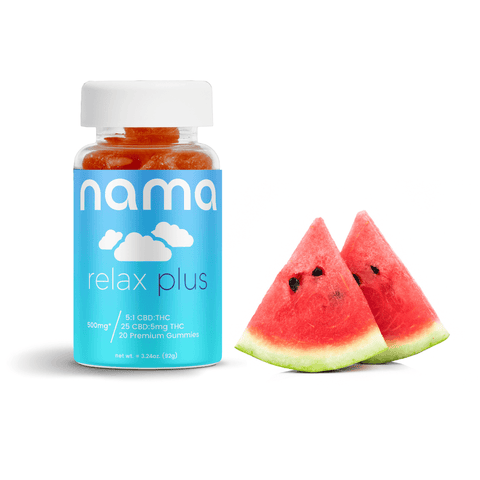
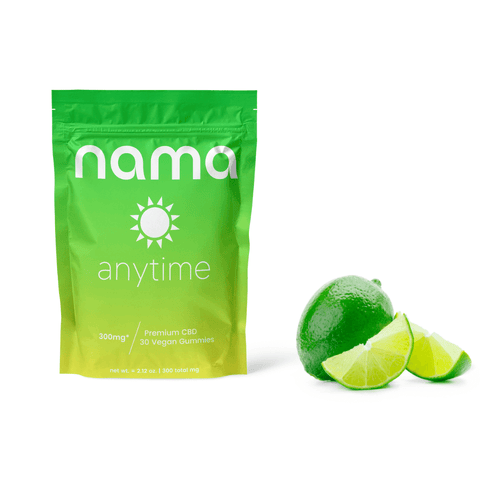
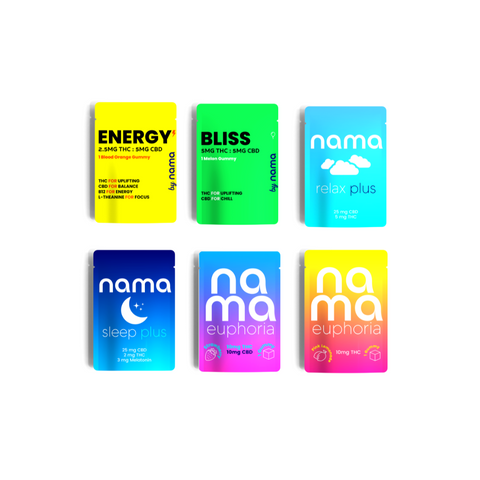
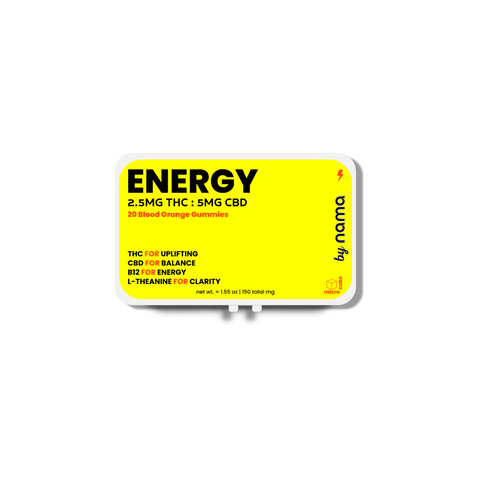

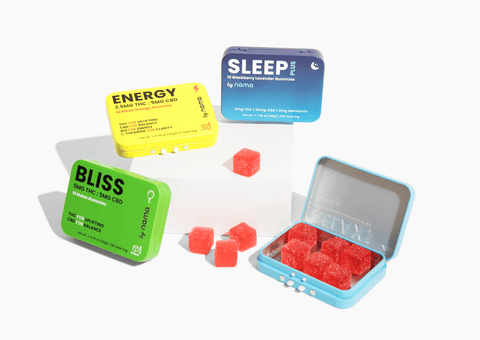
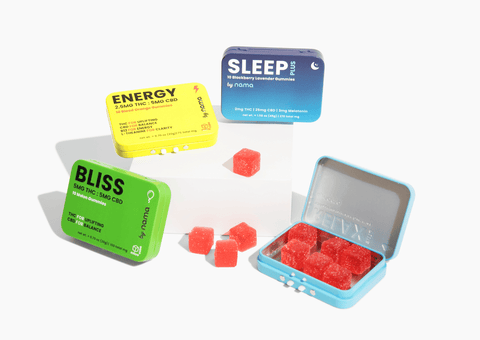
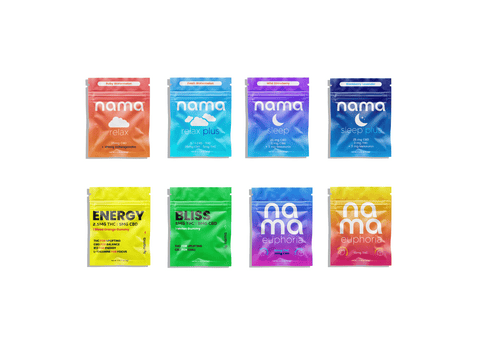

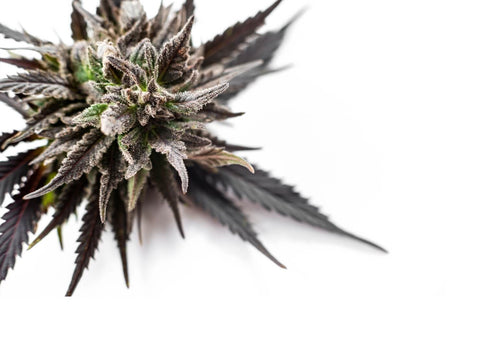
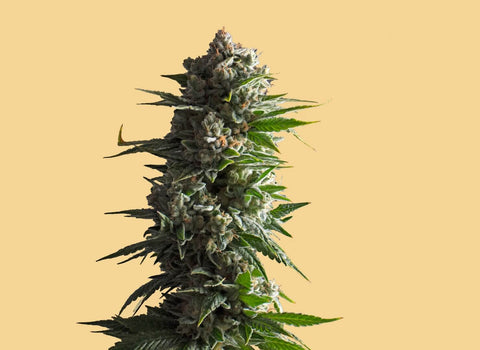



Comments (0)
There are no comments for this article. Be the first one to leave a message!